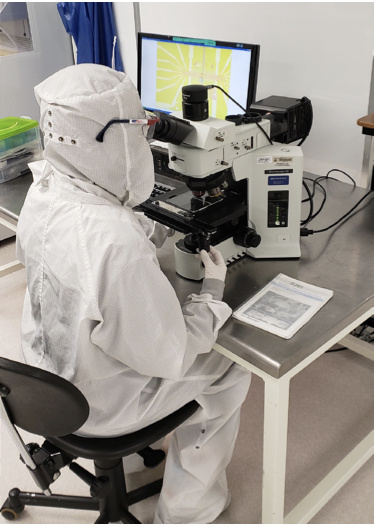A recent study led by Li Shi's research team, published in Nature, unveils a distinctive mechanism for hot electron cooling pathway in graphene devices. This discovery introduces innovative approaches to manipulate electron transport properties by tuning the reflection symmetry of two-dimensional heterostructures and provide insights that can help the development of graphene-based quantum devices.
Graphene is now being actively investigated as a next-generation electronic and quantum material due to its extraordinary electrical and thermal properties and being an ideal platform hosting intriguing collective phenomena, including superconductivity and superfluidity. The electronic thermal conductivity provides insight into the electron energy relaxation processes due to electron-phonon coupling, which is unavailable from electric transport measurements that probe the electron momentum relaxation. Despite decades of research, the electronic thermal conductivity in graphene has yet to be measured across a wide temperature range and doping level to probe electron-phonon interaction, due to the technical challenges of separating the electron contribution from the total thermal conductivity that usually contains a large lattice contribution.
With years of efforts, researchers in Li Shi’s group have demonstrated a novel sensitive microbridge device to successfully measure the electronic thermal conductivity of graphene from about 30 K to over 300 K.

A highly sensitive electronic thermal conductivity measurement in a suspended micro-bridge device
The measurement results uncover three distinct electron transport regimes in graphene, featuring as hydrodynamic thermal transport dominated by electron-electron interaction near 30 K, inelastic electron-optical phonon scattering near room temperature, and quasi-elastic electron coupling to flexural and shear phonons accompanied by the recovery of the Wiedemann-Franz law at intermediate temperatures near 70 K. This finding has upended the long-held belief that flexural phonons are negligible in the phonon contribution to the electronic thermal resistivity and the energy transport from hot electrons to phonons.
By uncovering three distinct electron transport regimes and demonstrating that flexural phonons help to set the upper temperature limit of the electron hydrodynamics in graphene, this work represents an important advance in the understanding of the rich physics in graphene with tunable electron-phonon interactions and correlated transport phenomena. Equally importantly, the unique electronic thermal transport measurement approach will have a strong impact on future research using electronic thermal transport to provide insight into the emerging collective phenomena in a broad class of two-dimensional materials and heterostructures.
The leading authors of this study are Dr. Mir Mohammad Sadeghi and Yajie Huang from Department of Mechanical Engineering and Materials Science and Engineering Program, under the guidance of Prof. Li Shi. The research also relies on the valuable insights and theoretical analysis of Dr. Chao Lian, Prof. Feliciano Giustino, and Prof. Allan MacDonald in Department of Physics and Prof. Emanuel Tutuc in Department of Electrical and Computer Engineering.

MS&E student Yajie Huang, one of the leading authors, is using a microscope to look at a sample she has prepared in the cleanroom.


